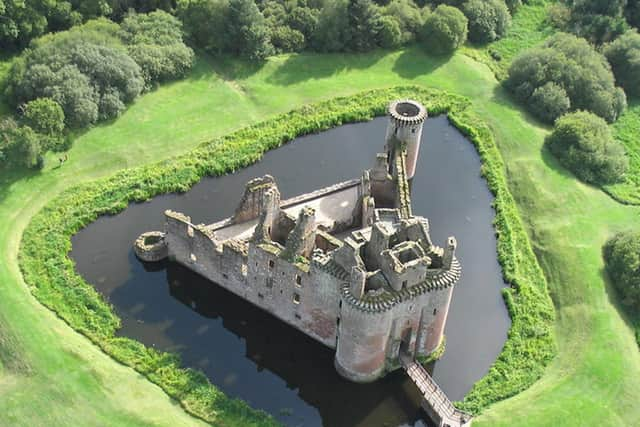Key historic buildings remain closed with safety checks to take a 'couple of years'
Inspections are taking place at 206 properties owned and cared for by Historic Environment Scotland (HES), with public access restricted at 20 sites last June and a further 50 added to the list by January this year as concerns were raised about their condition. Three have so far fully re-opened.
Linlithgow Palace, Caerlaverock Castle near Dumfries, Arbroath Abbey in Angus and Tantallon Castle near North Berwick are among the properties that have remain closed for more than a year, although visitors are allowed in gardens and grounds.
Advertisement
Hide AdAdvertisement
Hide AdCraig Mearns, director of operations at HES, said it had been with a “heavy heart” that access was restricted at the historic sites.
He added the inspections programme, which was halted by Covid in 2020 and now facing a number of challenges given the scale and sensitivity of the sites, would now “likely take a couple of years” to complete.
Mr Mearns, in an article for HES, said concerns were first raised about the condition of some buildings in 2019 when staff at a small number of sites started to notice an increase in small pieces of masonry becoming dislodged.


Mr Mearns added: “In the spring of 2021, we were able to resume inspections safely. These initial inspections discovered there were areas within some sites where the stone and mortar had deteriorated and was potentially problematic.
"We could not allow visitors and colleagues to keep accessing these monuments knowing that there was a potential risk to life from falling masonry. Legally, we had to mitigate known and likely risks.”
Climate change, increased rainfall and the impact of the weather on some ruined buildings – already struck by the “ravages of history including the Scottish Reformation, sieges, and historic fires" – were causing properties to deteriorate, he said.
The scale of some of the historic properties means inspections are taking weeks to complete, with check on stonework to take 45 days at Tantallon Castle, 22 days at Rothesay Castle and 30 days at Bothwell Castle.
Rope access is being used to carry out the inspections at sites which cannot take heavy machinery, such as St Andrews Castle.
Advertisement
Hide AdAdvertisement
Hide AdInspections are due to continue over the winter, but weather will dictate the programme given staff safety.
At the buildings that remain closed, alternative visitor experiences have been created, including a virtual reality experience of the siege mines at St Andrews Castle.
Mr Mearns added: “Scotland is not alone in facing these threats to nationally important historic buildings. We are one of the first nations to tackle the issue head on.”
Gordon Morrison, chief executive of Association of Scottish Visitor Attractions, said: “HES is to be commended for its continued commitment to investing heavily to safeguard the future of the iconic heritage attractions within its care - that are such a rich asset to tourism and to our communities - so that these outstanding historic sites can be experienced and enjoyed for many generations to come.”
Comments
Want to join the conversation? Please or to comment on this article.
